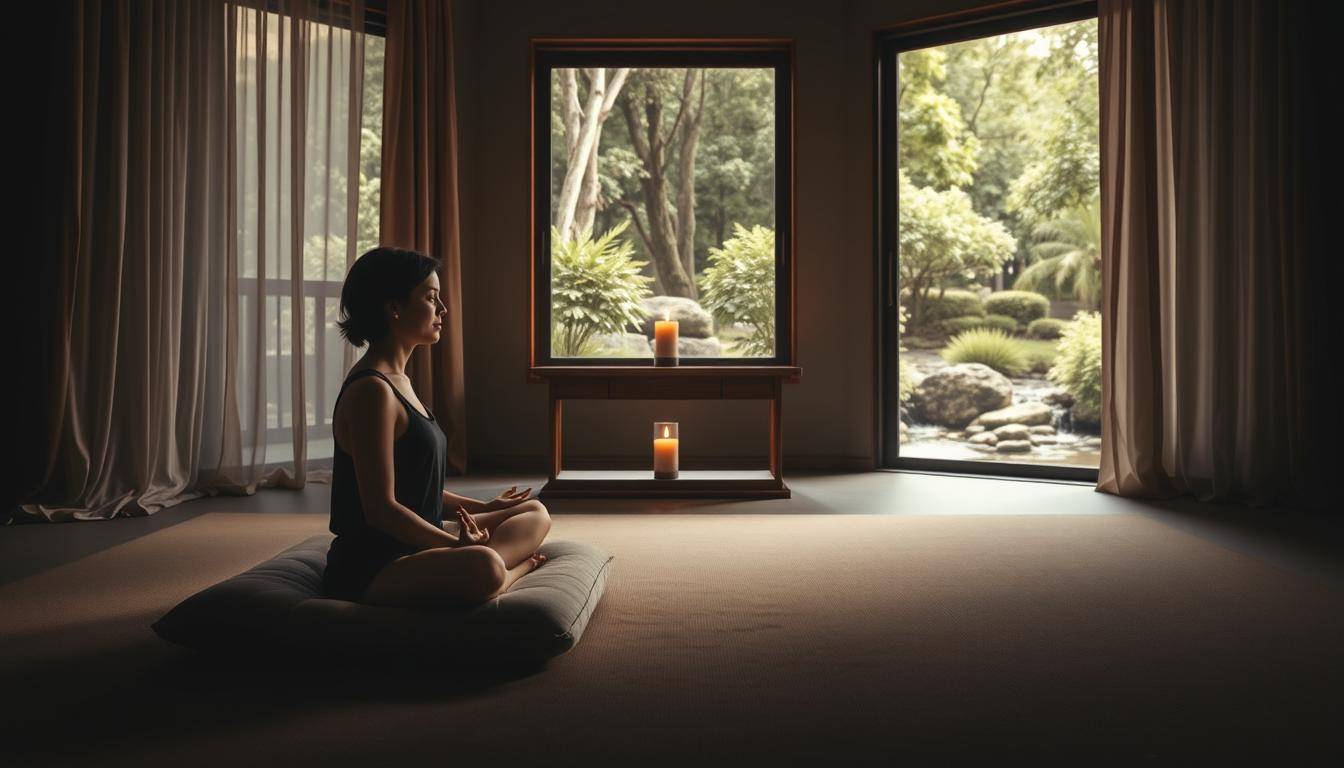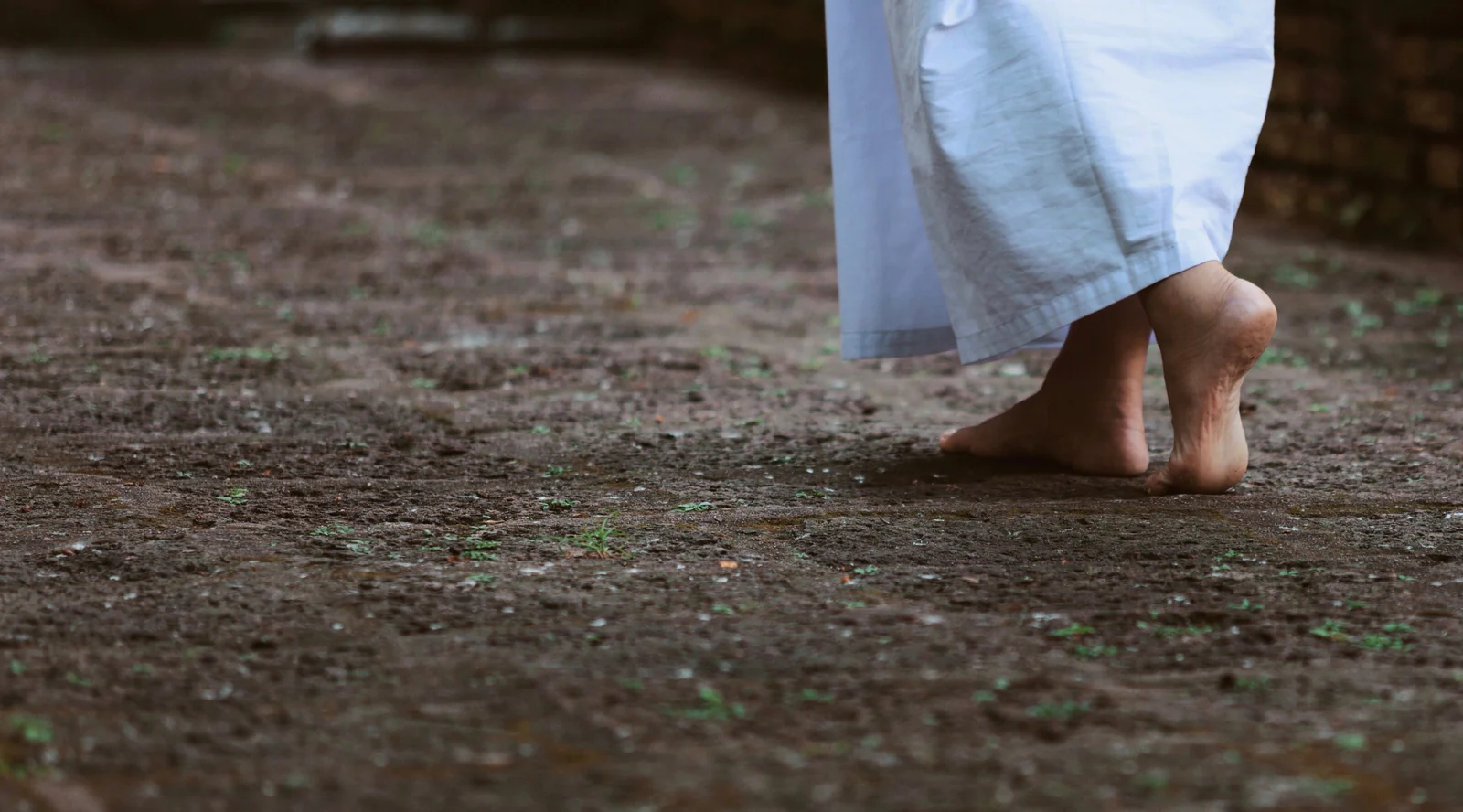“Peace is available in every moment—right here, right now.” These words from mindfulness pioneer Thich Nhat Hanh capture the essence of what modern seekers need most: accessible tools to reclaim calm amid chaos. While daily pressures mount, creating space for self-care remains non-negotiable for maintaining balance.
Imagine cultivating mental clarity without rearranging your schedule. Brief yet intentional pauses—like a focused 10-minute session—can reset your nervous system and sharpen decision-making. Neuroscience confirms that consistent short practices rewire neural pathways, building resilience against stress.
This guide reveals how anyone can integrate transformative pauses into packed routines. You’ll learn science-backed techniques that adapt to morning commutes, lunch breaks, or evening transitions. The magic lies in consistency—small daily investments compound into lasting emotional balance and heightened productivity.
Whether you’re new to mindfulness or refining your approach, these strategies prioritize practicality. Discover how to anchor yourself during hectic moments, access inner calm on demand, and sustain momentum through life’s unpredictable rhythms.
Key Takeaways
- Short daily sessions create measurable improvements in focus and stress management
- Consistent practice adapts to any schedule without overwhelming commitments
- Neuroscience supports brief mindfulness for lasting cognitive benefits
- Techniques work equally well for beginners and experienced practitioners
- Emotional resilience grows through regular micro-practices
- Productivity increases when paired with intentional mental resets
Introduction to Meditation and Its Benefits
In today’s fast-paced world, finding moments of calm can seem elusive—yet meditation offers a bridge to inner peace accessible to everyone. This ancient practice activates the body’s natural relaxation response, shifting brain activity into harmonious alpha waves that mirror serene ocean patterns.
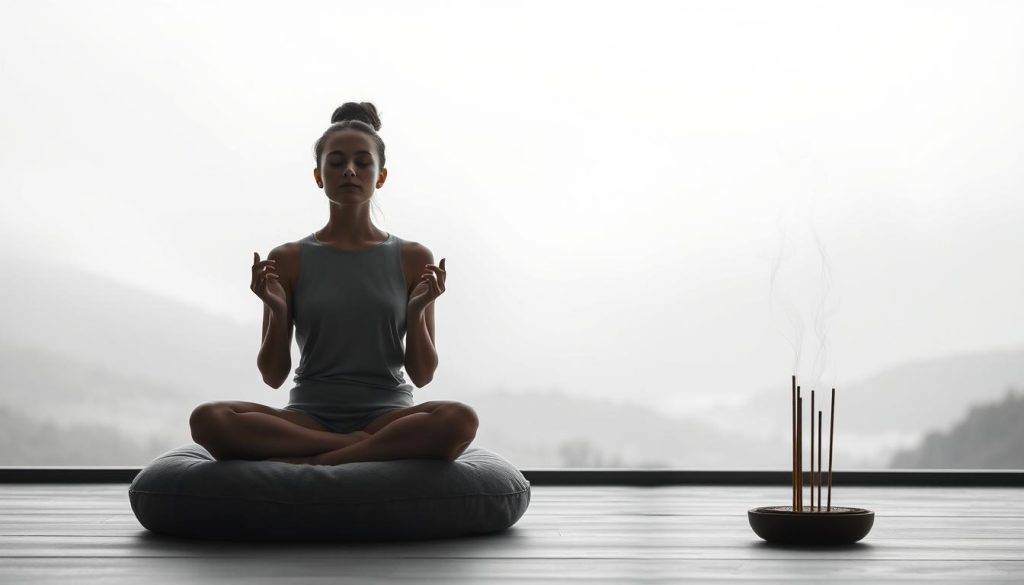
Foundations of Mindful Awareness
At its core, meditation practice trains your mind to observe thoughts without attachment. Neuroscience reveals that consistent sessions strengthen neural pathways linked to emotional control.
“The quality of your awareness determines the quality of your life,”
reflects how this mental discipline reshapes daily experiences.
Transformative Effects on Wellbeing
Research demonstrates measurable health benefits, including:
| Benefit | With Meditation | Without Practice |
|---|---|---|
| Stress Response | Controlled activation | Frequent overwhelm |
| Focus Duration | Increased 27% | Average decline |
| Anxiety Levels | 38% reduction | Consistent spikes |
| Blood Pressure | Improved regulation | Higher baseline |
By anchoring attention in the present moment, practitioners report clearer decision-making and creative problem-solving. These changes compound over time—like daily deposits in a mental resilience bank.
Establishing a Daily Practice with a Ten Minute Meditation
Building lasting habits requires strategy, not just willpower. Neuroscience reveals that consistent daily routines activate the brain’s reward centers, making repeated behaviors feel automatic over time. This principle applies powerfully to mindfulness practices designed for modern lifestyles.

Creating a Simple Routine You Can Stick To
Morning hours often work best for meditation daily practice. Research shows 72% of successful practitioners prioritize first thing sessions. Your pre-frontal cortex—responsible for decision-making—is most receptive after sleep. Pair your practice with existing habits like brewing coffee to create natural triggers.
Flexibility matters more than perfection. If 6 AM feels unrealistic, try post-commute reflection or lunchtime pauses. The key lies in showing up every day, even for five focused minutes. As psychologist Angela Duckworth notes:
“Grit grows through small wins repeated.”
Adapting to Your Daily Life and Schedule
Urban commuters report success with train-seat breathing exercises. Parents might practice during naptimes. Track progress through a simple calendar checkmark system—visual proof reinforces commitment. Miss a day meditate session? Reset without guilt tomorrow.
Your routine should evolve with life’s seasons. Summer vacations might shift practice to beach sunrises. Winter months could involve cozy chair sessions. This adaptability prevents burnout while maintaining meditation daily benefits. Remember—consistency beats intensity when building sustainable change.
Guided Meditation Techniques for Beginners
Navigating the world of mindfulness can feel overwhelming for newcomers. Guided sessions act as training wheels for your awareness journey—providing structure while building essential skills. This approach removes the uncertainty many feel when first exploring inner stillness.
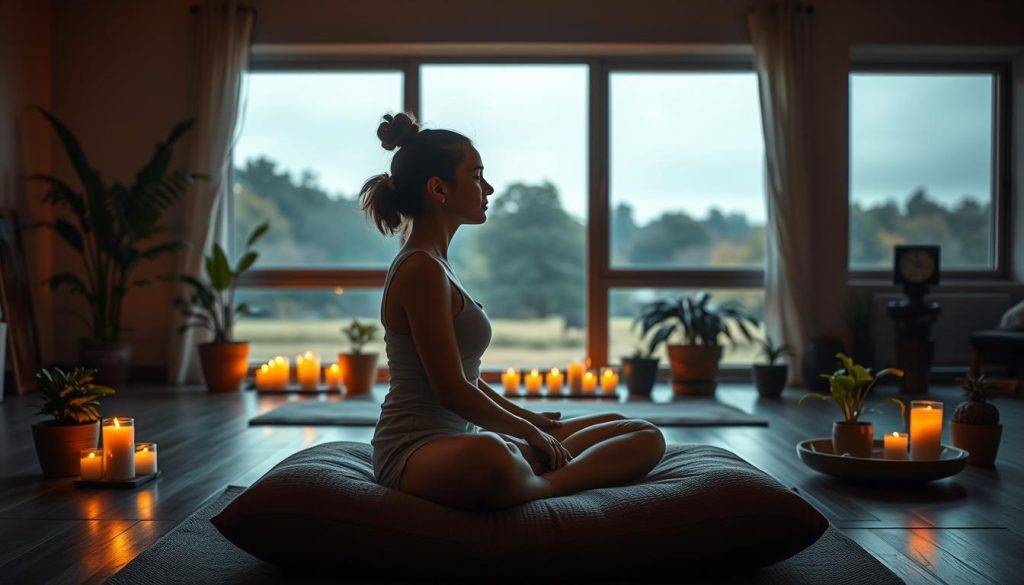
What Is Guided Meditation and How It Works
Think of these sessions as a mental GPS. An experienced instructor verbally directs your focus through breathing patterns, body scans, or visualization exercises. This external guidance helps bypass common frustrations like mind-wandering or self-doubt.
Expert Tips from Meditation Help Resources
Seasoned teachers recommend these strategies:
- Start with theme-based sessions (stress relief or focus) to align with immediate needs
- Pause and re-center whenever distractions arise—this builds mental discipline
- Journal insights post-practice to reinforce learning
Choosing the Right Guided Meditations
Quality matters more than quantity. Look for:
- Clear vocal pacing that matches your energy level
- Instructors with trauma-informed certifications
- Sessions addressing specific goals like emotional regulation
“A good guide doesn’t just teach techniques—they create space for self-discovery,”
notes mindfulness coach Lila Chen. As skills develop, many naturally transition to silent practice, carrying forward the techniques learned through guided support.
Integrating Mindfulness into Your Daily Routine
Everyday routines hold hidden opportunities for mindful awareness. Unlike traditional meditation formats, integration turns life itself into your practice space. Neuroscience confirms that brief conscious pauses during ordinary tasks activate the same brain regions as formal sessions.
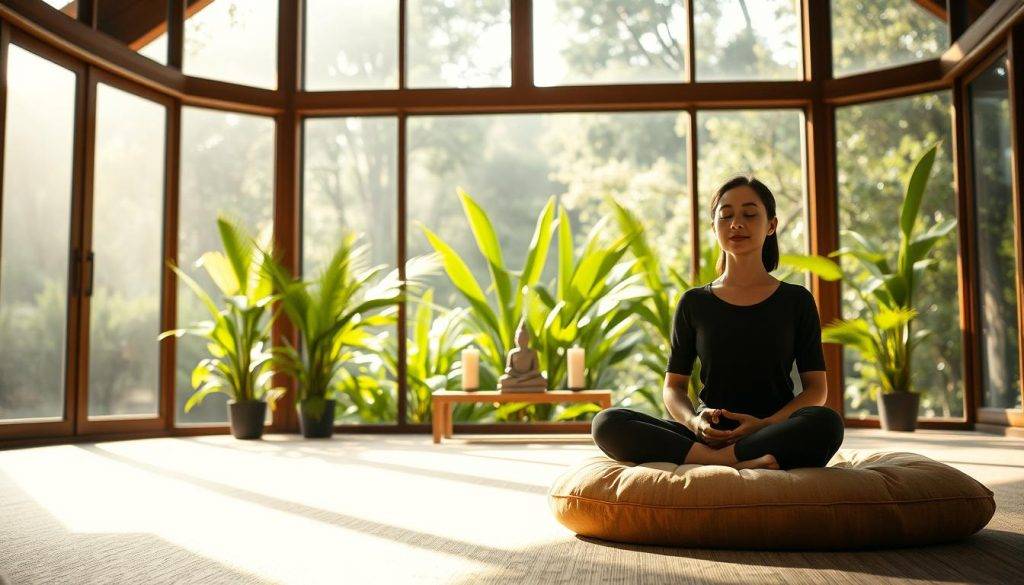
Simple Mindfulness Practices During Everyday Activities
Transform mundane actions into grounding rituals. While washing dishes, notice water temperature and soap bubbles. During commutes, feel steering wheel textures or train seat vibrations. These micro-practices build neural pathways for sustained presence.
Waiting rooms and break areas become perfect for mindfulness meditation. Try this technique: inhale while counting ceiling tiles, exhale while observing ambient sounds. This anchors attention in the present moment without requiring special preparation.
Even high-stress environments offer chances for awareness. Before responding to emails, take three conscious breaths. When walking between meetings, feel each footfall. As psychologist Jon Kabat-Zinn observes:
“Wherever you go, there you are—your capacity for mindfulness travels with you.”
Consistent mindfulness practice rewires automatic responses. Over time, checking your phone becomes a cue to notice posture. Lunch breaks transform into sensory explorations of taste and texture. This seamless integration makes daily life your most powerful teacher.
Overcoming Common Challenges in Meditation
Every meditation journey encounters rough patches—moments when focus wavers or commitment falters. These experiences don’t indicate failure but reveal opportunities to deepen self-awareness. Research shows 89% of practitioners face mental distractions initially, yet these become gateways to building focus resilience.
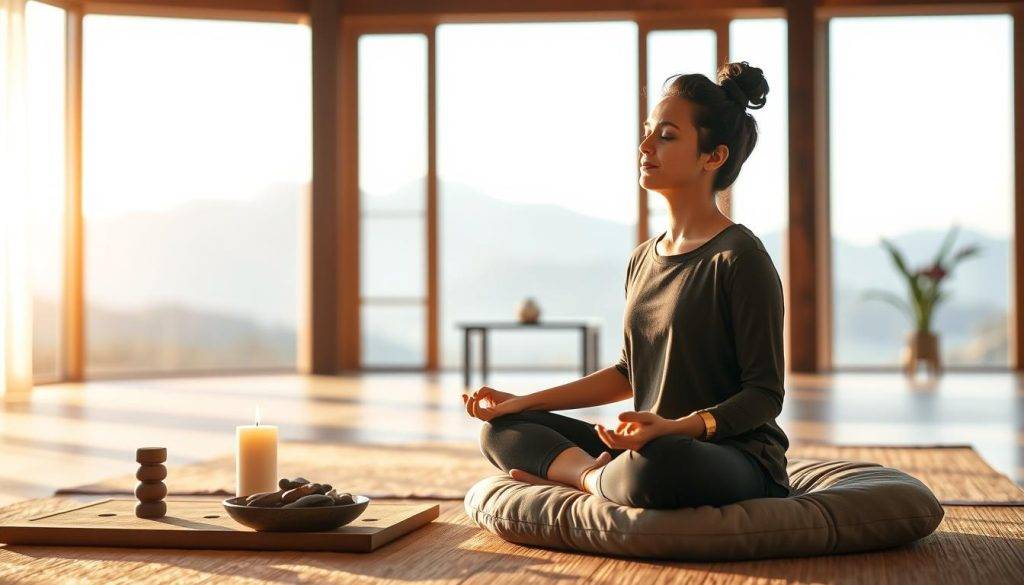
Dealing with Distractions and Unwanted Thoughts
A wandering mind isn’t sabotaging your practice—it’s providing the raw material for growth. Neuroscientists confirm that each time you notice distractions and gently return to your breath, you strengthen prefrontal cortex networks. The key lies in observing thoughts like passing weather patterns without getting caught in mental storms.
“Your awareness is the sky—thoughts are just clouds moving through it.”
This perspective shift transforms frustration into curiosity. Instead of battling mental chatter, acknowledge it with neutral phrases like “thinking happening” before refocusing.
Managing Stress and Staying Consistent
Many newcomers expect immediate stress relief, but true progress comes through regular engagement with discomfort. Studies reveal practitioners who embrace challenging sessions develop 34% greater emotional regulation within eight weeks. Consistency thrives when releasing “all-or-nothing” thinking—even two minutes of intentional breathing counts.
Building sustainable habits requires celebrating small victories. Track progress through a simple journal entry system, noting how you navigated difficult moments rather than judging session quality. Over time, this builds confidence in your ability to handle life’s pressures with grounded clarity.
Advanced Techniques to Enhance Your Meditation Practice
Elevating your mindfulness journey requires exploring methods that sharpen awareness and unlock deeper states of presence. Two powerful approaches—body scanning and intentional breathwork—offer pathways to refine your practice while addressing specific physical and mental needs.

Exploring Variations: Body Scans and Breathwork
Body scan meditation systematically guides attention through each part of your physical form. Start at the crown of your head, noticing sensations without judgment. Progress downward to release tension in shoulders, hands, and feet. This technique cultivates profound mind-body connections while dissolving stored stress.
Advanced breath control methods transform ordinary respiration into a precision tool. Try rhythmic patterns like 4-7-8 breathing: inhale for 4 counts, hold for 7, exhale for 8. Studies show this method reduces anxiety 31% faster than standard techniques.
| Technique | Primary Benefit | Ideal Time |
|---|---|---|
| Body Scan | Tension Release | Evening |
| Alternate Nostril | Energy Balance | Morning |
| Box Breathing | Focus Enhancement | Work Breaks |
Deepening Your Practice with Self-Care Strategies
Proper posture forms the foundation of effective sessions. Sit upright with relaxed shoulders and softened facial muscles. This alignment allows energy to flow freely while maintaining alertness. As yoga therapist Linda Williams notes:
“The body remembers what the mind forgets—consistent posture trains your nervous system to enter calm states faster.”
Integrate awareness exercises into nightly routines to improve sleep quality. A 5-minute pre-bed body scan helps transition from mental chatter to restorative rest. Pair with diaphragmatic breathing to activate the relaxation response 40% more effectively.
These techniques work synergistically—combine morning breathwork for energy with evening body scans for recovery. Over time, you’ll develop personalized rituals that help deepen your connection to present-moment awareness.
Conclusion
Embracing stillness doesn’t require grand gestures—sometimes life’s deepest shifts begin in quiet pockets of intention. Your commitment to brief daily pauses becomes a revolutionary act of self-care, strengthening neural pathways for lasting health benefits while modeling balanced living for others.
Each intentional breath taken during your routine acts as a ripple in water—subtle yet far-reaching. Improved sleep patterns, reduced anxiety, and sharper focus emerge not from perfection, but from showing up consistently. What begins as discipline evolves into self-respect: a daily promise to honor your worth.
The true magic lies in how these moments reshape your relationship with time. Seconds once lost to distractions become opportunities to reset. Challenges transform into invitations to apply newfound clarity. You join millions worldwide who’ve discovered that inner peace thrives through regular micro-practices.
Remember—your meditation journey needs no finish line. Whether you dedicate five minutes or fifteen, what matters is cultivating presence amid life’s beautiful chaos. As Thich Nhat Hanh wisely observed: “The present moment is where life is available.”
FAQ
How can a 10-minute session help reduce stress?
Short meditations train the mind to pause reactive patterns, lowering cortisol levels. Regular practice builds resilience against daily pressures by fostering present-moment awareness—even brief sessions create neural pathways for calmer responses.
What if I struggle to quiet my thoughts during practice?
Thoughts are natural—mindfulness isn’t about silencing them but observing without judgment. Guided meditations often teach “anchoring” techniques like breath focus, helping you gently return attention when distractions arise.
Can beginners benefit from body scan exercises?
Absolutely. Body scans cultivate mind-body connection by directing attention systematically. This technique reduces physical tension while improving sensory awareness—ideal for those new to mindfulness practices.
How do I maintain consistency with a daily routine?
Anchor meditation to existing habits—like morning coffee or pre-sleep rituals. Apps like Calm or Headspace offer reminder features. Start with 3-4 days weekly, gradually increasing as the habit solidifies.
Are there specific techniques for anxiety relief?
Breathwork variations—such as 4-7-8 breathing—activate the parasympathetic nervous system. Pairing these with visualization (e.g., imagining stress dissolving) creates dual-action relief, making sessions effective for acute anxiety management.
What’s the difference between mindfulness and meditation?
Meditation is a dedicated practice; mindfulness is the skill of nonjudgmental presence applied anywhere. Think of meditation as gym time for building mindfulness “muscles” used throughout daily life.
How does guided meditation enhance focus?
Narrated sessions provide structure, reducing mental effort. By following a voice through imagery or mantras, the mind stays engaged—perfect for overcoming restlessness during workday breaks or study sessions.
Can I track progress without formal metrics?
Notice subtle shifts: improved reaction speed to stressors, fewer sleepless nights, or increased patience in conversations. Journaling observations weekly reveals patterns traditional metrics might miss.
























































